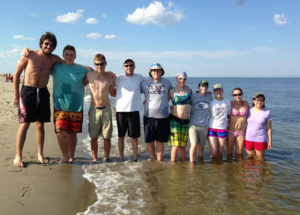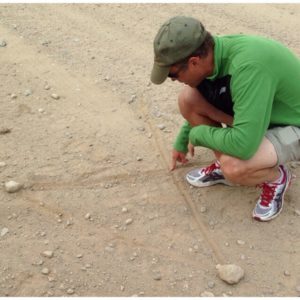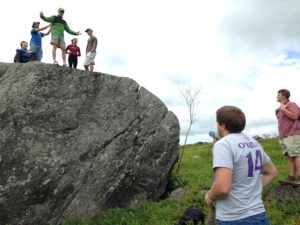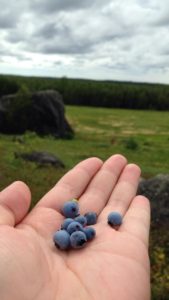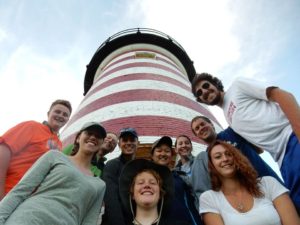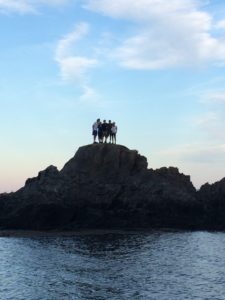Our tired group woke this morning to shaking tents at 7:30 a.m. (by Bobby and Dr. Erikson). Breakfast seemed to have a flavour of DEET mixed in because of all the bug spray we put on to deter the swarms of mosquitoes. After that we had a lecture on atmospheric circulation patterns.
Then we went to Kelly’s Beach (here in Kouchibouguac National Park, New Brunswick) just a 2 minute drive away. Except it wasn’t all play and instead much our time was spent measuring the beach profile. We measured the slope of the beach from the crest of the beach berm down about 40 m to the water, and then underwater for another 90 m all the way out to a shallow sand bar. For each part of the profile, we determined variations in sand sizes using a stack of sieves. When we had some down time it was nice to cool off in the ocean (to our surprise a bit warmer than at home) considering how hot the sun was. Unfortuanetly some of us got a bit burnt from the sun’s rays. We had some great finds out at the sand bar, including crabs, hermit crabs, snails (some small and some quite large) and most interesting Andrew caught with his hands an unsuspecting flounder (a strange looking flat fish with both eyes on one side of their head).
Bobby delivered our usual lunch of cold cut sandwiches to the beach, this time treated with oreos. After completing our profile for the afternoon we went back and had a dinner of chili and pasta with cornbread and salad. Dessert was amazing (strawberriy short cake).
Tonight is on our third night of actually camping (10th night total). We’re making it along really well and excited for the many days ahead.
– Matthew Pfannenstiel
